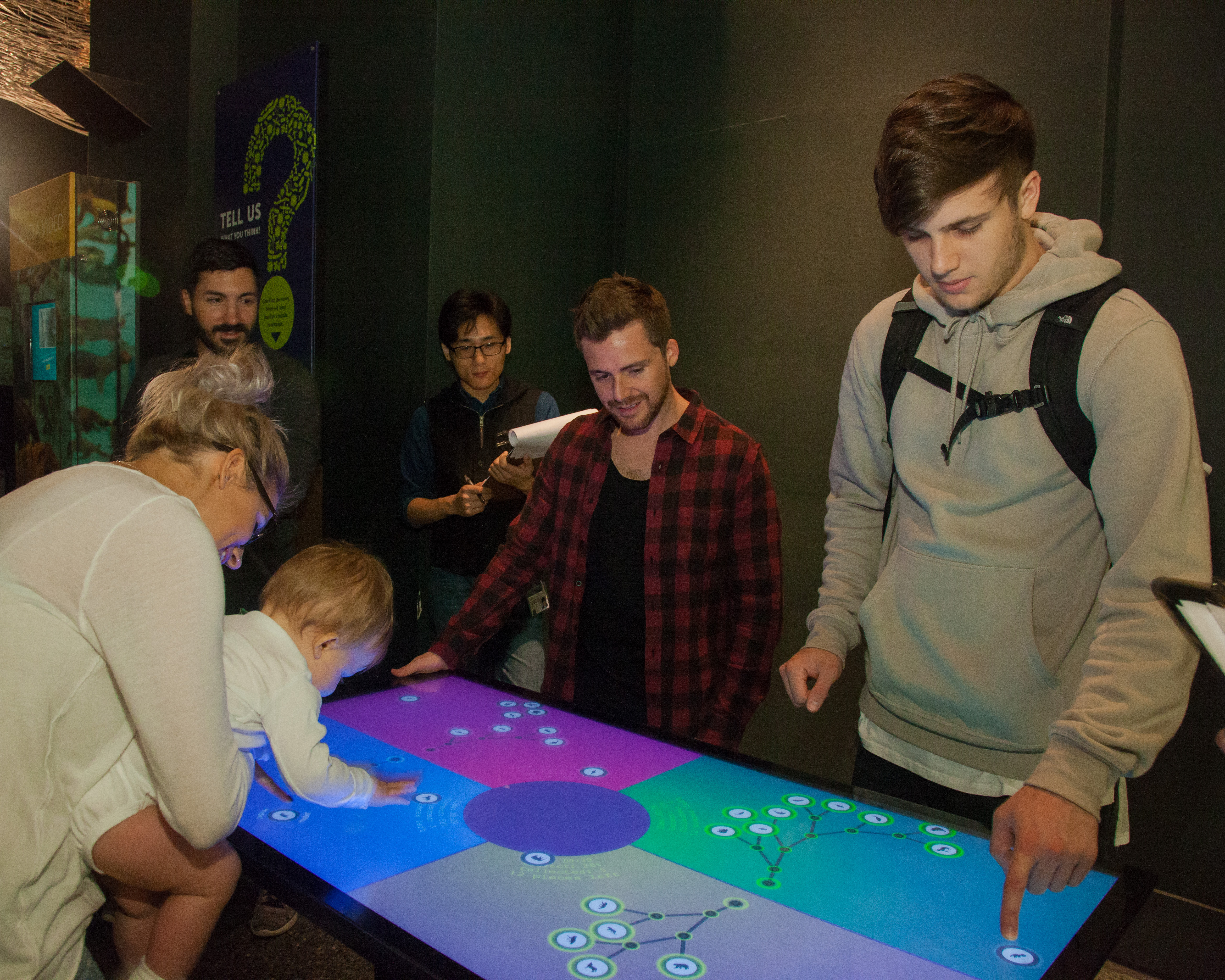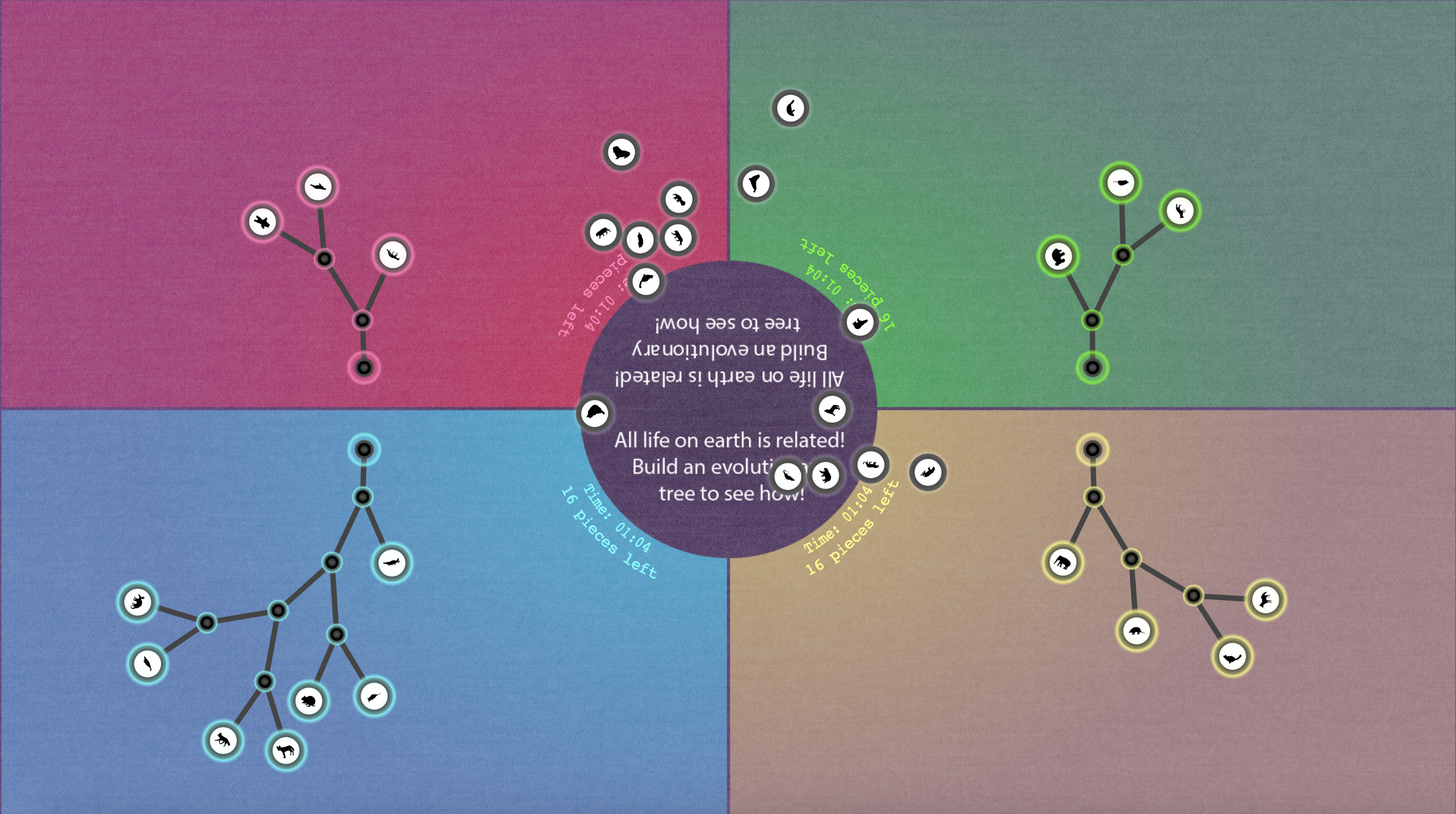Tree of Life game
We developed a smartphone-based game that has visitors build an evolutionary tree by comparing three species at a time and determining which two are more closely related. The game introduces players to a fundamental practice in evolutionary biology: scientists often use the “three-taxon statement” method to place newly discovered species in the evolutionary tree. To make deductions about relatedness, players are given hints about morphology and behavior, and are encouraged to look closely at physical exhibits on display. The game is a popular addition to the Explorer app, a wayfinding and self-guided tour app for AMNH visitors.
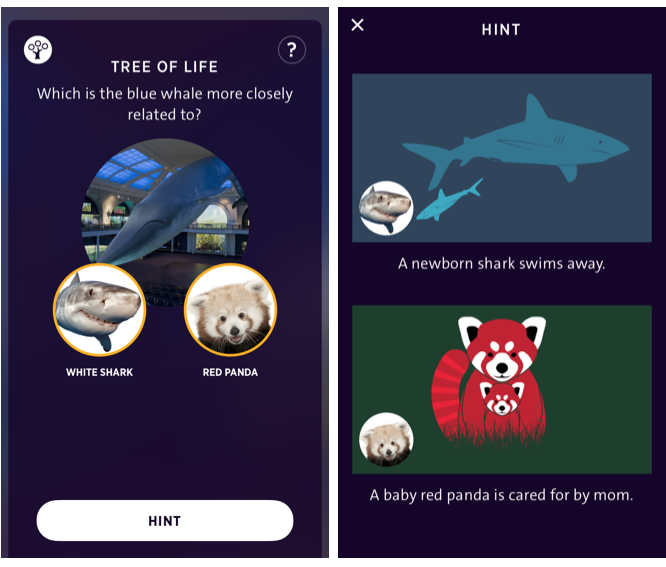
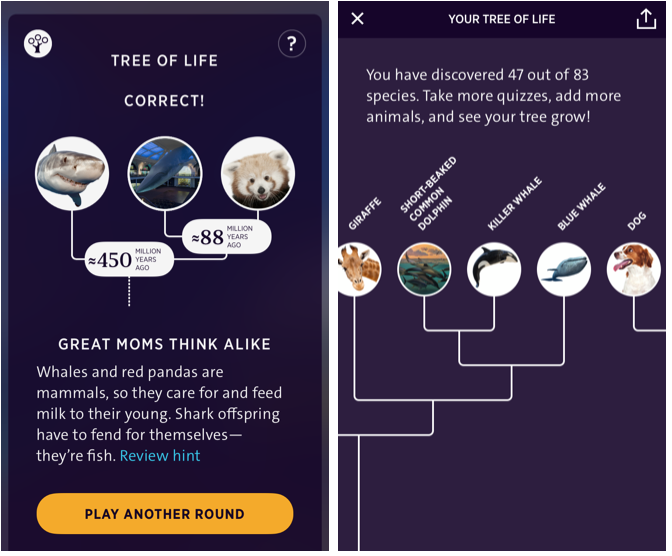
To explore how we could expand the reach of the Tree of Life game, we developed and tested two prototypes: a tablet-based version and a multiplayer touchtable.
Tree of Life tablet (prototype)
In this version, we focused on insects and their place in the evolutionary tree of life. The prototype was user-tested and evaluated as part of a content-planning exercise for the Museum’s insectarium and butterfly viviarium, new exhibition spaces being developed for the Gilder Center for Science, Education and Innovation. (Play the prototype game here.)

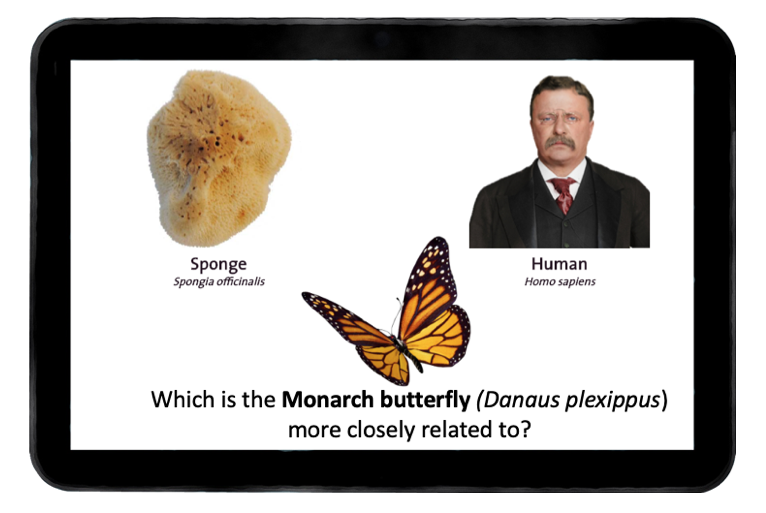

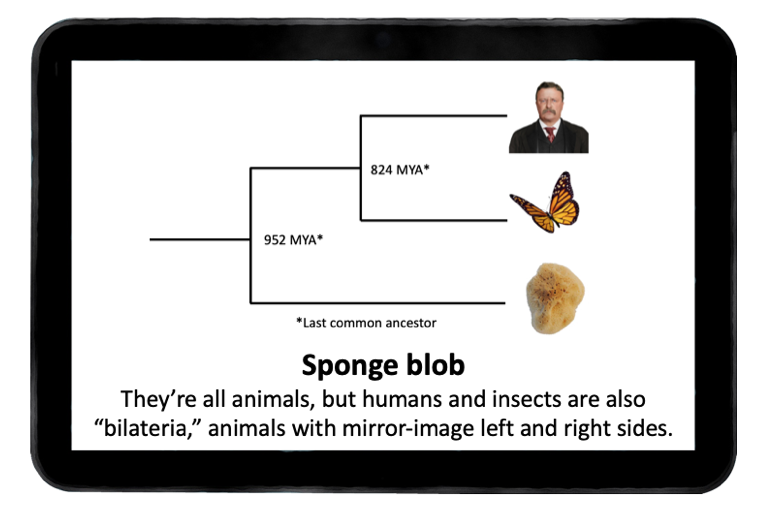
Tree of Life touchtable (prototype)
In this tree-building game, four players are given a supply of game pieces, free-floating nodes with animal silhouettes that drift around like air-hockey pucks. When one is touched, its name is displayed. Players are given a colored quadrant with their own root node on which they build a tree. As game pieces are dragged near the tree, potential links fade in. One of these is the correct location for the animal. If a piece is released near the right place, it’s pulled into the tree. If the wrong place, it’s ejected. Difficulty naturally rises as the tree grows: there are more possible connection points, and right answers become less obvious.
